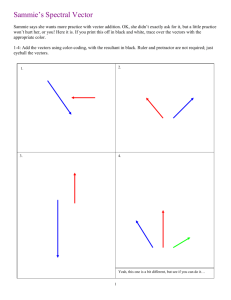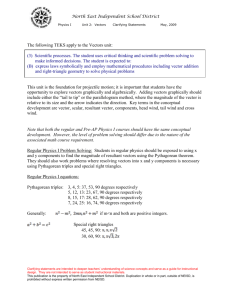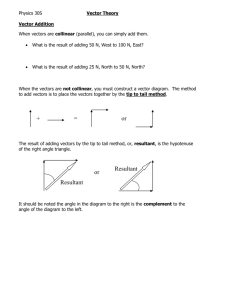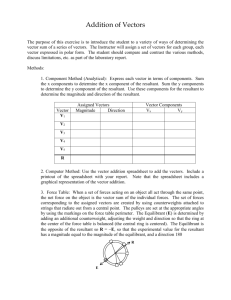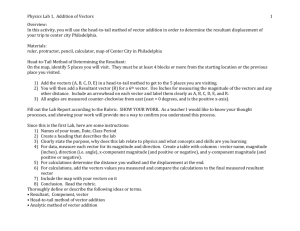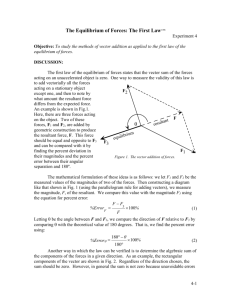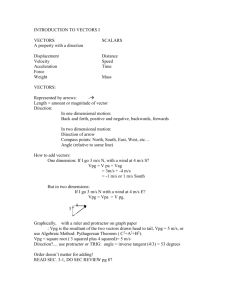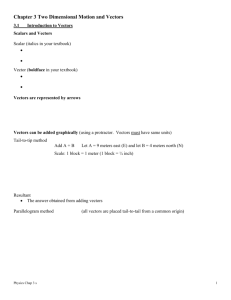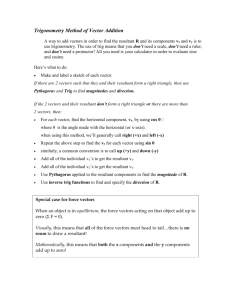Graphing Method For Adding and Subtracting Vectors
advertisement
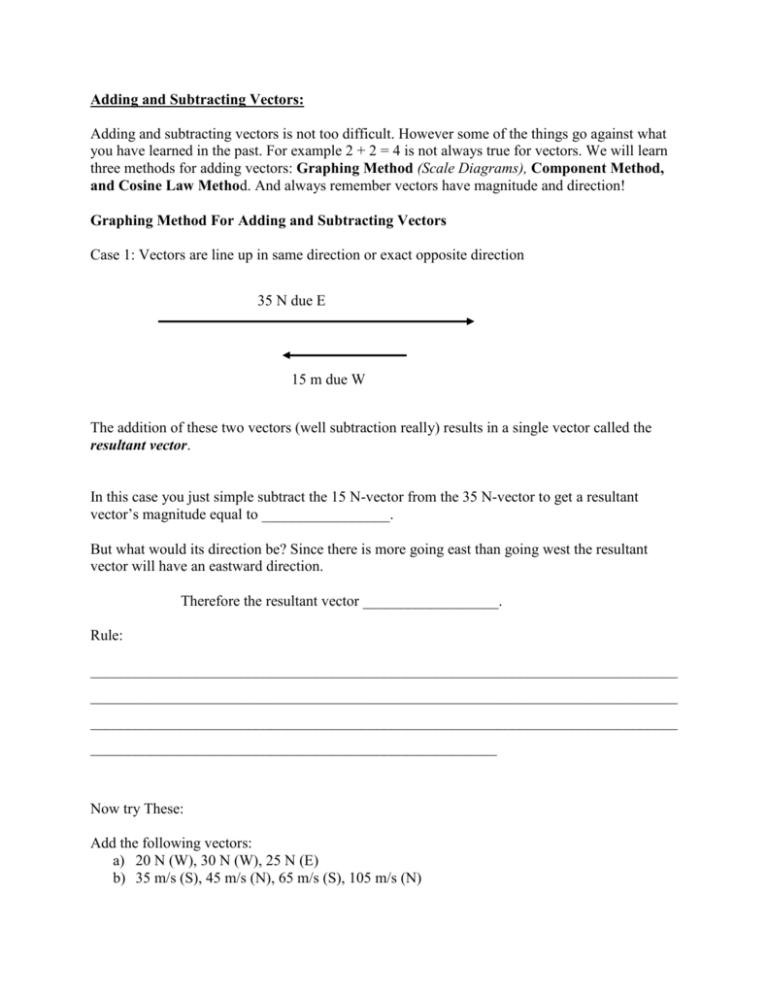
Adding and Subtracting Vectors:
Adding and subtracting vectors is not too difficult. However some of the things go against what
you have learned in the past. For example 2 + 2 = 4 is not always true for vectors. We will learn
three methods for adding vectors: Graphing Method (Scale Diagrams), Component Method,
and Cosine Law Method. And always remember vectors have magnitude and direction!
Graphing Method For Adding and Subtracting Vectors
Case 1: Vectors are line up in same direction or exact opposite direction
35 N due E
15 m due W
The addition of these two vectors (well subtraction really) results in a single vector called the
resultant vector.
In this case you just simple subtract the 15 N-vector from the 35 N-vector to get a resultant
vector’s magnitude equal to _________________.
But what would its direction be? Since there is more going east than going west the resultant
vector will have an eastward direction.
Therefore the resultant vector __________________.
Rule:
______________________________________________________________________________
______________________________________________________________________________
______________________________________________________________________________
______________________________________________________
Now try These:
Add the following vectors:
a) 20 N (W), 30 N (W), 25 N (E)
b) 35 m/s (S), 45 m/s (N), 65 m/s (S), 105 m/s (N)
c) 105 m (N of E), 205 m (S of W)
Vectors are not always lined up this way. Let us look at a simple boat travel problem.
A ship travels for 10.0 km due south, turns and heads another 8.0 km at 30o W of S. What is the
final displacement of the ship?
To solve this problem we need to make a _________________ as accurately as possible.
We need to select a _______________. It must fit on your paper but it must be large enough to
show some accuracy. I will suggest you use _____________________. {Always state your scale
when making scale diagrams to graphically solve vector problems.}
The ship will end up where the last head of the last vector ends up. You can then use your ruler
and the scale to determine the magnitude of its displacement and a protractor to determine its
direction.
Let’s try one more:
A plane travels at 470 km/h in still air (no wind). The plane travels due north but is pushed
sideways by an 85 km/h wind coming from 56o N of E. What is the resultant velocity of the
plane?
Scale: _________________
Now Try These.
1. A boat travels at 150 m due east. It then turns to a heading of 34o S of E for another 240
m. What is the resultant displacement of the boat?
2. An airplane can travel at 450 km/h in still air. The plane heads due south but is deflected
off course by a 75 km/h wind coming from the northeast. What is the resultant velocity of
the plane?
3. A dog runs the following vectors:
a. 120 m due west
b. Then turns and runs 320 m due south
c. Then turns and runs for 275m in a direction of 32o S of E.
What is the resultant displacement of the dog?

